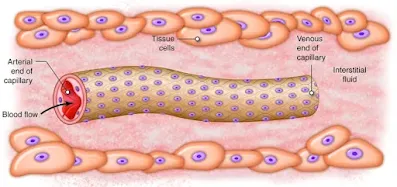What is Blood Pressure? A Comprehensive Guide
Introduction
Blood pressure is a crucial
physiological index, which indicates the pressure of blood flowing in the blood
vessels against the vessel walls. It is a vital sign of cardiovascular
wellbeing and it is fundamental in the course of the appropriate circulation of
blood to organs and tissues. Knowledge of blood pressure, its measurement, its
determinants, and its significance is important in the prevention and treatment
of related conditions such as hypertension (high blood pressure) and
hypotension (low blood pressure), which may have significant health
consequences.
This paper gives a comprehensive, deep
insight into blood pressure including its definition, measurement, control,
health risks, and its management.
1. Definition of
Blood Pressure
Blood pressure (BP) refers to the
force of the circulating blood against the blood vessel (mainly artery) walls. The
heart produces it when pumping blood to the circulatory system. Blood pressure
is measured in millimeters of mercury (mmHg) and it comprises of two figures:
·
Systolic
Pressure: The larger figure, which is the
pressure in the arteries when the heart contracts (beats).
·
Diastolic
Pressure: The lower of the two figures, and is
the pressure in the arteries when the heart is relaxed between beats.
e.g. a blood pressure of 120/80 mmHg
reads:
·
120 mmHg
Systolic pressure (highest pressure in a heartbeat).
·
80 mmHg =
Diastolic pressure (lowest pressure in between heartbeats).
2. How Blood
Pressure is Measured
The measurement of blood pressure is
generally done with the help of the sphygmomanometer that is composed of an
inflatable cuff and a pressure-measuring device (mercury, aneroid, or digital).
This is done by:
1. Cuff Placement: The cuff is encircled around the upper arm
at the heart level.
2. Inflation:
The cuff is inflated and temporarily stops the blood flow in the brachial
artery.
3. Deflation:
The pressure is gradually brought out with the listening with a stethoscope (in
the case of manual reading) or electronically (in the case of digital
instruments).
4. Reading:
The initial sound audible (Korotkoff sounds) represents systolic pressure and
the point at which sound disappears represents diastolic pressure.
Types of Blood
Pressure Monitors
·
Manual
(Mercury or Aneroid): It involves the
usage of stethoscope and trained personnel.
·
Digital
(Automatic): Convenient,
usually domestic.
·
Ambulatory
Blood Pressure Monitoring (ABPM):
A 24-hour device that is carried around to record the variations.
3. Normal vs.
Abnormal Blood Pressure Ranges
American Heart Association (AHA)
defines the blood pressure categories as under:
|
Category |
Systolic (mmHg) |
Diastolic (mmHg) |
|
Normal |
<120 |
<80 |
|
Elevated |
120-129 |
<80 |
|
Hypertension Stage 1 |
130-139 |
80-89 |
|
Hypertension Stage 2 |
≥140 |
≥90 |
|
Hypertensive Crisis |
>180 |
>120 |
Low Blood
Pressure (Hypotension)
·
It is
defined as <90/60 mmHg.
·
May lead to
dizziness, fainting and shock in extreme situations.
4. Factors
Influencing Blood Pressure
The maintenance of blood pressure is
maintained by a fine balance of physiological and external influences:
A. Physiological
Factors
1. Cardiac Output: The amount of blood that is pumped by the
heart in one minute. The elevated cardiac output elevates BP.
2. Peripheral Resistance: Small or hard arteries becomes more
resistant, which elevates BP.
3. Blood Volume: The more blood that is in circulation the
higher the pressure.
4. Blood Viscosity: BP is elevated by increased blood viscosity
(e.g. due to dehydration).
5. Elasticity of Arteries: Hard arteries (e.g. in atherosclerosis) cause
increased BP.
B. Hormonal and
Nervous System Control
·
Renin-Angiotensin
System (RAS): Controls blood
volume and constriction of vessels.
·
Sympathetic
Nervous System: Accelerates the
heart rate and narrowing of the vessels.
·
Antidiuretic
Hormone (ADH): Water-retaining
hormone that raises the volume of blood.
·
Aldosterone: Causes sodium retention thereby raising
blood pressure.
C. Lifestyle and
Environmental Factors
·
Diet (High
Salt, Low Potassium): Too much sodium
causes fluid retention.
·
Physical
Inactivity: Decreases cardiovascular
performance.
·
Stress: Actuates adrenaline, incidentally raising
BP.
·
Alcohol and
Tobacco Use: Kills blood
vessels and increases BP.
·
Age: With time, arteries lose their flexibility
which raises BP.
·
Genetics: There is a contribution of family history to
hypertension.
Read Also: Breast Cancer: Causes, Symptoms, and Prevention
5. Health Risks
of Abnormal Blood Pressure
A. High Blood
Pressure (Hypertension)
It is commonly referred to as the "Silent
killer" since it might not have any symptoms but can cause:
·
Heart
Disease: Coronary heart disease, myocardial
infarction.
·
Stroke: It happens because of burst or clogged
arteries in the brain.
·
Kidney
Damage: Complete filtration dysfunction with
kidney failure.
·
Vision Loss: Eye (hypertensive retinopathy).
·
Aneurysms: Feeble arteries which can rupture.
B. Low Blood
Pressure (Hypotension)
Can cause:
·
Dizziness/Fainting: This is caused by poor brain blood
circulation.
·
Shock: Severe bleeding or infection can cause
life-threatening decrease in BP.
·
Organ Damage: When extended, may make organs lack oxygen.
6. Managing Blood
Pressure
A. Lifestyle
Modifications
1. Diet (DASH Diet): Fruit, vegetable, whole-grain, and low-fat
dairy rich.
2. Reduce Sodium: Goal: when hypertensive, less than 1,500
mg/day.
3. Exercise:
150 minutes of moderate activity (e.g. walking, cycling) every week.
4. Weight Management: A reduction in body weight by 5-10 percent
can reduce BP.
5. Limit Alcohol & Quit Smoking: Vascular damage is reduced.
6. Stress Management: Yoga, breathing, meditation.
B. Medications
(If needed)
·
Diuretics: Decrease overload fluid.
·
ACE
Inhibitors/ARBs: Enlarge blood
vessels.
·
Calcium
Channel Blockers: Decrease the
stiffness of arteries.
·
Beta-Blockers: Reduced production and heartbeat.
C. Regular
Monitoring
·
Home BP
monitoring assists in monitoring progress.
·
Yearly
physician visits by the individuals at risk.
7. Conclusion
Blood pressure is a vital sign, which
indicates cardiovascular health. It is vital to ensure that it is kept at a
normal range to avoid complications that are life-threatening such as heart
disease, stroke, and kidney failure. By adopting a healthier lifestyle,
combined with frequent checkups and medical treatment in case of emergency,
patients can easily control their blood pressure levels and support the
life-long healthy habits.
With this knowledge of how blood
pressure works, what risks it poses, and how it can be managed, one can make a
positive change in the state of their heart and general life quality.








Post a Comment
0Comments